Printed circuit boards (PCBs) are responsible for connecting electronic components and providing a platform for them to communicate with each other.
Aluminum PCBs, also known as metal core PCBs, are a type of PCB that utilizes an aluminum base instead of a traditional fiberglass or plastic base. The aluminum core serves as an efficient heat sink, dissipating heat generated by the electronic components more effectively than other types of PCBs. This property makes aluminum PCBs ideal for high-power LED lighting applications, power supplies, and motor control applications [1].
In this article, we will delve deeper into the world of aluminum PCBs. We will explore the benefits of using aluminum PCBs, including their superior thermal conductivity, durability, and reliability.
We will also discuss the various applications that aluminum PCBs are best suited for, such as high-power LED lighting, automotive electronics, and power electronics. Additionally, we will look at the manufacturing process of aluminum PCBs, including the materials used, the design considerations, and the fabrication methods.
By the end of this article, you will have a comprehensive understanding of what aluminum PCBs are and why they are an excellent choice for certain electronic applications.
What is Aluminum PCB?
Aluminum PCBs are Printed Circuit Boards (PCBs) used in electronic applications that have been made with an aluminum substrate. Aluminum is used as the base material instead of traditional fiberglass because it can provide more efficient heat dissipation, improved electrical performance, and higher rigidity than other materials.
The aluminum core is coated with a thin layer of dielectric material, typically a thermally conductive epoxy, to insulate the conductive traces and components from the metal base. The conductive traces are typically made of copper, and they are etched onto the dielectric layer using chemical or mechanical methods [2].
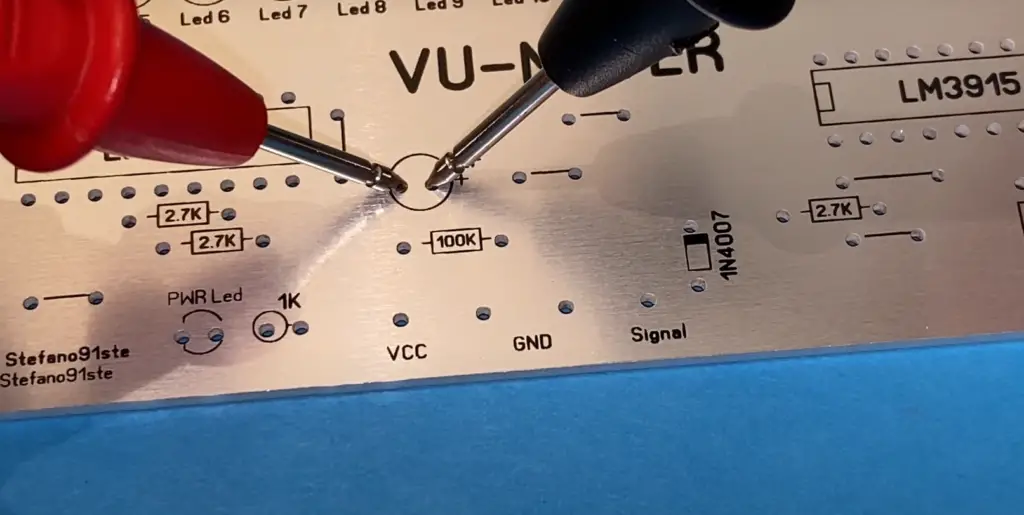
The electronic components are then mounted onto the board using various techniques such as surface-mount technology (SMT) or through-hole technology (THT). The combination of the aluminum base, dielectric layer, and conductive traces creates a robust and reliable PCB that can withstand high temperatures, high currents, and high voltages.
By using different thicknesses and types of aluminum, these boards can be tailored to meet specific design requirements while still being cost-effective when compared to other board materials. Additionally, they are waterproof, dustproof, and resist corrosion better than other circuit boards.
These characteristics make them ideal for many high-end electronic products including aerospace industry components and medical devices. In addition to their durability and reliability, aluminum PCBs also offer flexibility in terms of design options such as varying hole sizes, shapes, and drill patterns.
This flexibility makes them a great choice for many industries where custom-made circuit boards are needed. With their unique design and construction, aluminum PCBs are becoming increasingly popular in the electronics industry and offer numerous advantages over other types of printed circuit boards.
The manufacturing process of aluminum PCB includes such stages:
- Preparing the aluminum laminates;
- Printing of circuits;
- Drilling of positioning holes on aluminum laminates;
- Stack-up and curing;
- Solder masking;
- Application of surface finish;
- Testing [3];
Why is Aluminum Used in Circuit Boards?
Aluminum is used in circuit boards, specifically in aluminum PCBs or metal core PCBs, because of its excellent thermal conductivity properties. Aluminum has a much higher thermal conductivity than traditional PCB materials such as fiberglass and plastic. This means that aluminum can dissipate heat generated by electronic components more effectively and efficiently, reducing the risk of overheating and component failure.
In addition to its thermal conductivity properties, aluminum is also a lightweight and durable material that is resistant to corrosion. These properties make it an ideal material for use in electronic applications where weight, durability, and resistance to corrosion are important factors.
Aluminum PCBs are commonly used in high-power LED lighting applications, power supplies, and motor control applications, where high currents and high temperatures are present. By using an aluminum base, these applications can dissipate heat more effectively and improve overall performance and reliability [4].
Furthermore, the dielectric layer used in aluminum PCBs is typically a thermally conductive epoxy that enhances the thermal conductivity of the PCB. This layer helps to insulate the conductive traces and components from the metal base, preventing shorts and other electrical issues.

Structure of Aluminum PCB:
Circuit Copper Layer
The circuit copper layer is an essential component of the aluminum PCB, as it provides the conductive pathways for the electrical components of the PCB. The copper layer is typically applied to both sides of the aluminum PCB to create a double-sided PCB or can be applied to multiple layers to create a multi-layer PCB. The copper traces are designed using computer-aided design (CAD) software, which then uses laser printing or photolithography to transfer the copper pattern onto the aluminum substrate.
Insulating Layer
The insulating layer is an important component of the aluminum PCB as it provides protection against electrical shorts and maintains the separation between the copper traces on the top and bottom layers. The insulating layer is typically made of a polymer-based material, and its thickness depends on the application requirements. For example, if the aluminum PCB needs to withstand high voltages, thicker insulating layers are required.
Metal Substrate
The metal substrate provides mechanical support for the aluminum PCB and also serves to dissipate heat generated by the electrical components. The metal substrate can be made of various materials such as aluminum, copper, or stainless steel. Aluminum is the most commonly used material for the metal substrate of aluminum PCBs due to its lightweight and high thermal conductivity.
Performance of Aluminum PCB:
1) Thermal Dissipation
Thermal dissipation is one of the most crucial performance metrics for high-power electronic devices. The heat generated by electronic components can lead to reduced performance, shorter lifespan, and even catastrophic failure. Aluminum PCBs offer exceptional thermal dissipation properties due to their high thermal conductivity. This means that heat generated by electronic components can be quickly dissipated to the environment, preventing overheating and prolonging the lifespan of the device.
2) Thermal Expansion
Thermal expansion refers to the change in size or shape of a material due to changes in temperature. This can be a significant issue for electronic devices that are exposed to different temperatures, as it can cause stress on the components and potentially damage the device. Aluminum PCBs have a low coefficient of thermal expansion, which means they are more stable in different temperatures. This makes them more durable and reliable in high-temperature applications [5].
3) Stable Dielectric Constant
The dielectric constant is a measure of a material’s ability to store electrical energy. A stable dielectric constant is essential for consistent electrical performance over time. Aluminum PCBs have a stable dielectric constant that ensures consistent electrical performance even in high-frequency applications. This is due to the fact that the Aluminum layer in the PCB acts as a shield, reducing electromagnetic interference and improving signal integrity.

Application Of Aluminum PCB:
Audio Device
Aluminum PCBs are commonly used in audio devices due to their excellent thermal management capabilities. The heat generated by the components in audio devices can cause damage to the circuit board if not properly dissipated. Aluminum PCBs can dissipate heat more efficiently than traditional PCBs, ensuring that the components operate at their optimal temperature. The use of aluminum PCBs in audio devices can result in improved sound quality, longer lifespan, and increased reliability.
Power Supply
Typically, such PCBs are used in power supplies due to their high thermal conductivity and low thermal expansion coefficient. The use of aluminum PCBs in power supplies can result in improved thermal management, reduced thermal stress, and increased reliability. Aluminum PCBs can also reduce the overall size and weight of the power supply, making them ideal for use in compact electronic devices.
Communication Electronic Equipment
Aluminum PCBs are primarily used in communication electronic equipment due to their excellent thermal management capabilities and high mechanical strength. The heat generated by the components in communication electronic equipment can cause damage to the circuit board if not properly dissipated. Aluminum PCBs can dissipate heat more efficiently than traditional PCBs, ensuring that the components operate at their optimal temperature. The high mechanical strength of aluminum PCBs can also provide increased durability and reliability.
Office Automation Equipment
Aluminum PCBs are frequently used in office automation equipment due to their excellent thermal management capabilities and high mechanical strength. The heat generated by the components in office automation equipment can cause damage to the circuit board if not properly dissipated. Aluminum PCBs can dissipate heat more efficiently than traditional PCBs, ensuring that the components operate at their optimal temperature. The high mechanical strength of aluminum PCBs can also provide increased durability and reliability, making them ideal for use in high-demand office environments.
Automobile
Aluminum-core PCBs are widely applied in the automotive industry due to their excellent thermal management capabilities, high mechanical strength, and resistance to vibration and shock. The heat generated by the components in an automobile can cause damage to the circuit board if not properly dissipated. Aluminum PCBs can dissipate heat more efficiently than traditional PCBs, ensuring that the components operate at their optimal temperature. The high mechanical strength of aluminum PCBs can also provide increased durability and reliability in harsh automotive environment [6].
Computer
The heat generated by the components in a computer can cause damage to the circuit board if not properly dissipated. Aluminum PCBs can dissipate heat more efficiently than traditional PCBs, ensuring that the components operate at their optimal temperature. The high mechanical strength of aluminum PCBs can also provide increased durability and reliability in the demanding computer environment.
Power Modules
Aluminum PCBs are commonly used in power modules due to their high thermal conductivity and low thermal expansion coefficient. The use of aluminum PCBs in power modules can result in improved thermal management, reduced thermal stress, and increased reliability. Aluminum PCBs can also reduce the overall size and weight of the power module, making them ideal for use in compact electronic devices.
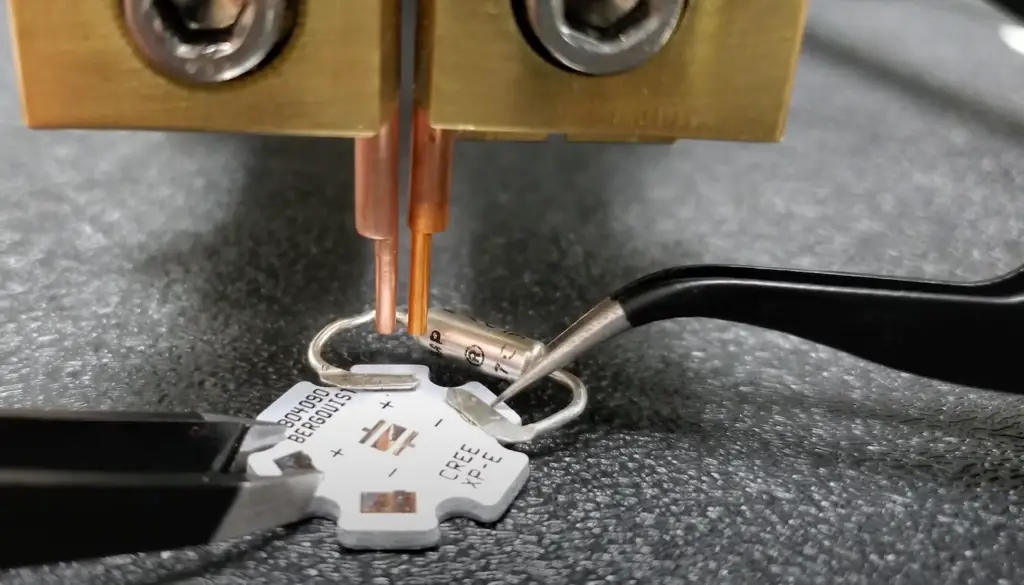
Lamps And Lighting
Aluminum PCBs are commonly used in lamps and lighting due to their excellent thermal management capabilities and high mechanical strength. The heat generated by the components in lamps and lighting can cause damage to the circuit board if not properly dissipated. Aluminum PCBs can dissipate heat more efficiently than traditional PCBs, ensuring that the components operate at their optimal temperature. The high mechanical strength of aluminum PCBs can also provide increased durability and reliability in demanding lighting environments.
In addition to these applications, aluminum PCBs are also commonly used in other industries such as aerospace, medical, and military. The excellent thermal management capabilities, high mechanical strength, and durability of aluminum PCBs make them ideal for use in demanding environments.
Types of Aluminum PCBs:
Through-Hole Aluminum PCBs
Through-hole Aluminum PCBs are the most common type of Aluminum PCB. They use a layer of Aluminum as the base substrate, and electronic components are mounted using drilled holes in the Aluminum layer. These PCBs are used in applications that require high power and are exposed to harsh environments. They offer excellent thermal conductivity and are capable of dissipating heat quickly, which makes them ideal for applications that generate a lot of heat [7].
Hybrid Aluminum PCBs
Hybrid Aluminum PCBs are a combination of through-hole and Surface Mount Technology (SMT) PCBs. They offer the benefits of both technologies and are commonly used in applications that require high-density wiring and high-frequency signal transmission. These PCBs are often used in advanced electronic devices such as smartphones, tablets, and computers. They also offer excellent heat dissipation properties and are suitable for applications that generate a lot of heat.
High Conductivity Aluminum Printed Circuit Board
High Conductivity Aluminum PCBs are designed for applications that require high conductivity and low resistance. These PCBs use a layer of Aluminum as the base substrate and a layer of copper as the conductor. They are typically applied in high-frequency applications such as radio-frequency identification (RFID) and wireless communication. They offer excellent electrical performance and are capable of transmitting signals over long distances with minimal loss.
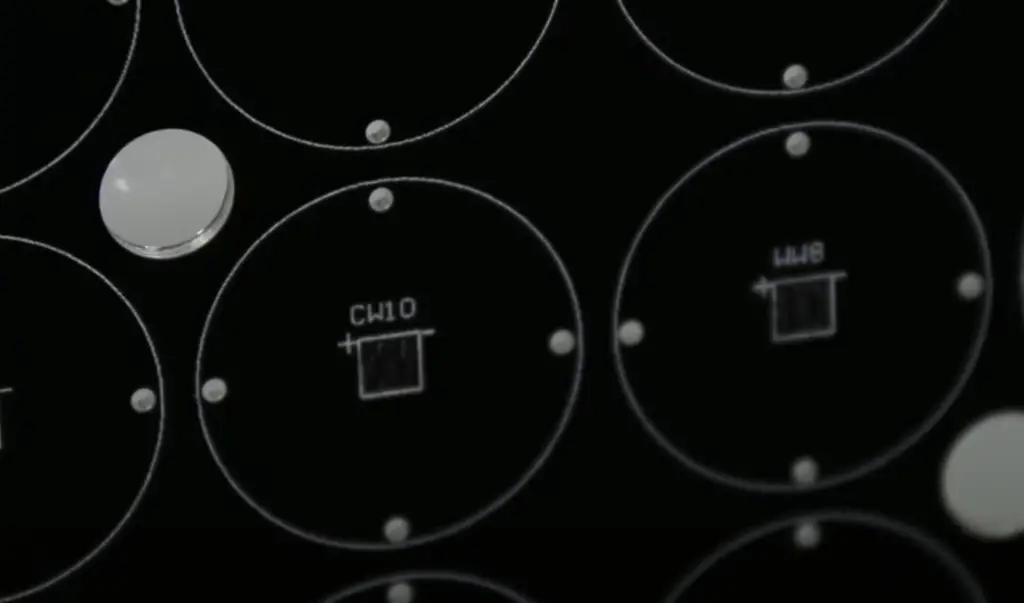
Aluminum Nitride Ceramic Printed Circuit Board
Aluminum Nitride Ceramic Printed Circuit Boards are a type of Aluminum PCB that uses Aluminum Nitride Ceramic as the base substrate. These PCBs are designed for applications that require excellent thermal conductivity, high durability, and resistance to corrosion. They are commonly used in high-power applications such as power supplies, high-frequency amplifiers, and LED lighting. They offer excellent thermal performance and are capable of dissipating heat quickly, which helps to prevent overheating and prolongs the life of electronic components.
Flexible Aluminum PCBs
Flexible Aluminum PCBs are designed to bend and flex without breaking. These PCBs use a layer of Aluminum as the base substrate and a layer of flexible material such as polyimide or polyester film. They are commonly used in applications that require high flexibility and are exposed to harsh environments. They offer excellent thermal performance and are capable of dissipating heat quickly, which helps to prevent overheating and prolongs the life of electronic components.
Multi-Layer Aluminum PCBs
Multi-Layer Aluminum PCBs are a type of Aluminum PCB that uses multiple layers of Aluminum as the base substrate. These PCBs are designed for applications that require high-density wiring and high-frequency signal transmission. They offer excellent electrical performance and are capable of transmitting signals over long distances with minimal loss. They also offer excellent thermal performance and are capable of dissipating heat quickly, which helps to prevent overheating and prolongs the life of electronic components.
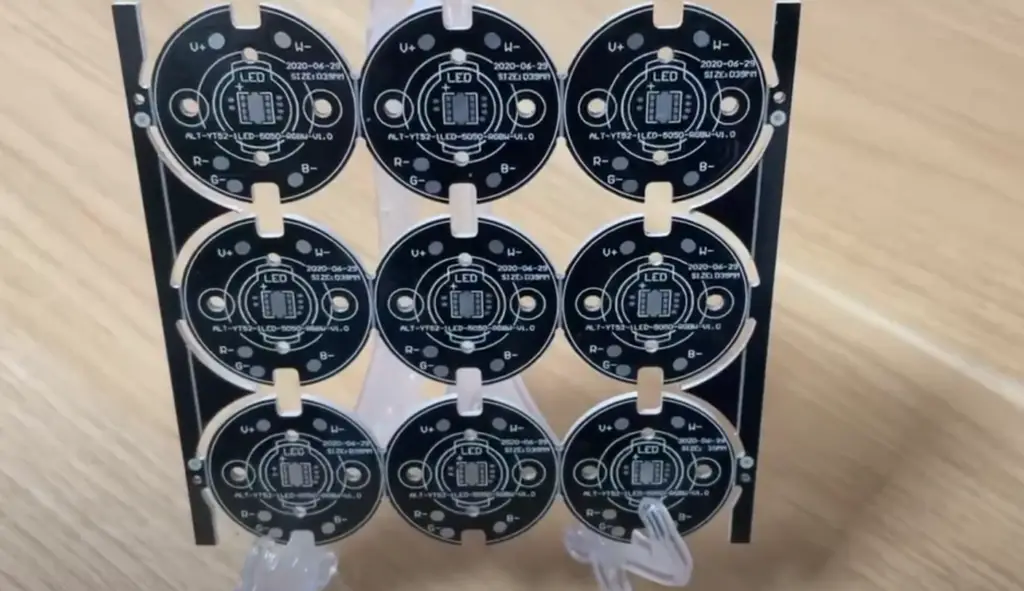
Advantages of Aluminum PCBs:
Heat Dissipation
One of the significant advantages of aluminum PCBs is their excellent heat dissipation properties. Aluminum is an excellent conductor of heat, and using it as a substrate helps to dissipate heat efficiently from the electronic components. This is especially important for high-power applications where electronic components generate a lot of heat. With aluminum PCBs, the heat generated by the components is quickly transferred to the aluminum substrate and then dissipated to the environment. This helps to prevent overheating and prolongs the life of the electronic components.
Higher Durability
Aluminum PCBs are also more durable than other types of PCBs. The aluminum substrate used in these PCBs is stronger and more robust than traditional substrates, which makes them less prone to damage from external forces such as impact or vibration. This makes them ideal for use in harsh environments or applications where the device may be subjected to mechanical stress. Aluminum PCBs are also more resistant to corrosion, which helps to prevent the degradation of the electronic components over time.
It Is Less Expensive
Another advantage of aluminum PCBs is that they are less expensive than other types of PCBs. While the initial cost of producing an aluminum PCB may be higher than that of a traditional PCB, the overall cost of ownership is lower. Aluminum PCBs require less maintenance and have a longer lifespan, which reduces the need for frequent replacements. They are also more reliable, which means fewer warranty claims and repairs. The cost savings associated with using aluminum PCBs make them an attractive option for manufacturers looking to reduce costs while improving the performance of their electronic devices.
Environmentally Friendly
Aluminum PCBs are also more environmentally friendly than other types of PCBs. The aluminum substrate used in these PCBs is recyclable, which reduces the environmental impact of manufacturing and disposal. Additionally, the use of aluminum PCBs can help to reduce energy consumption, as they require less power to operate due to their excellent heat dissipation properties. This makes them an ideal choice for manufacturers looking to reduce their carbon footprint and improve their sustainability.
Lightweight
Finally, aluminum PCBs are lightweight, which makes them ideal for use in applications where weight is a significant factor. The use of aluminum as a substrate reduces the overall weight of the PCB, which can be important in applications such as aerospace or automotive electronics, where weight can impact performance and fuel efficiency. Additionally, the lightweight nature of aluminum PCBs makes them easier to handle and transport during the manufacturing process, which can help to reduce costs and improve efficiency.
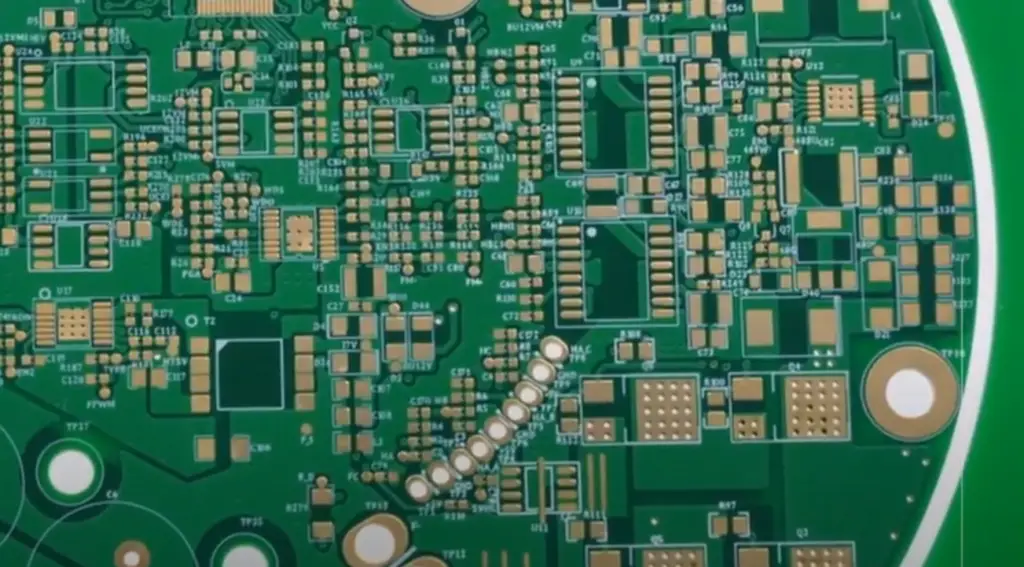
Disadvantages of Aluminum PCB:
Manufacturing Process
One of the main disadvantages of Aluminum PCBs is the manufacturing process. The process of manufacturing Aluminum PCBs is more complicated and time-consuming than traditional FR4 PCBs. The manufacturing process involves a series of steps, including drilling, plating, and etching. These steps require a higher level of precision and specialized machinery, which makes the manufacturing process more expensive.
Poor Ability To Handle Vibration Stress
Another disadvantage of Aluminum PCBs is their poor ability to handle vibration stress. Aluminum is a relatively soft metal, and it is more susceptible to bending and breaking under stress compared to other metals like copper. When Aluminum PCBs are exposed to vibration stress, they tend to crack and break, which can lead to circuit failure. This makes Aluminum PCBs less suitable for applications that involve frequent movement or high-vibration environments.
Lower Thermal Conductivity
Furthermore, Aluminum PCBs have a lower thermal conductivity compared to copper-based PCBs. This can result in higher temperatures in certain components, which can lead to component failure or a reduced lifespan. Therefore, designers must carefully consider the thermal properties of Aluminum PCBs when designing electronic systems.
The Higher Cost
In addition, the higher cost of manufacturing Aluminum PCBs makes them less attractive for low-cost applications. Aluminum PCBs are typically used in high-end applications that require superior performance and durability, such as LED lighting, power supplies, and automotive electronics. However, for simpler electronic applications, FR4 PCBs or other lower-cost options may be more suitable.
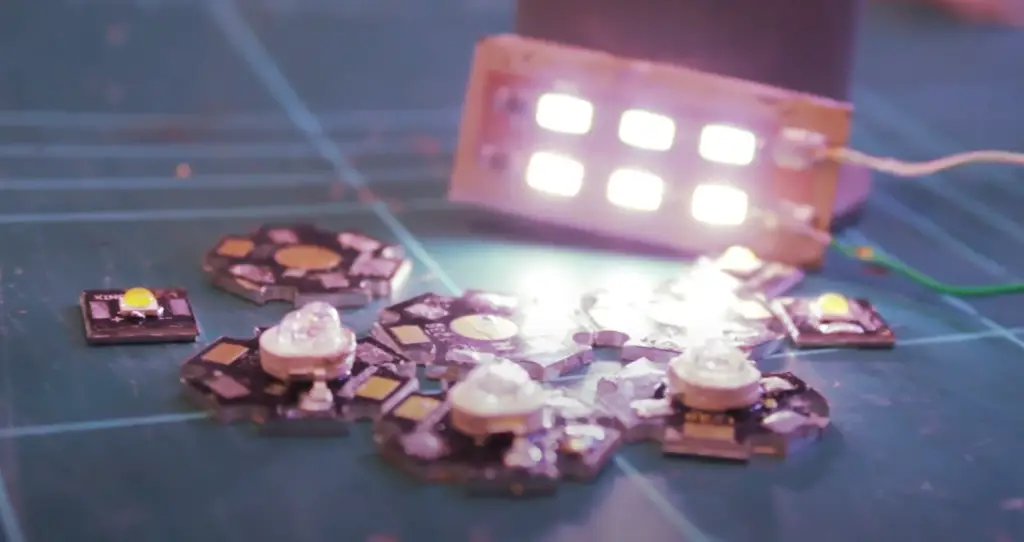
Manufacturing Difficulties of Aluminum PCB:
1) Application of Solder Mask
A solder mask is a crucial element in the manufacturing of PCBs, as it protects the component from contamination and damage during soldering. Solder mask application can be challenging in the case of aluminum PCBs due to their unique properties. Aluminum PCBs have a higher thermal conductivity, which makes the solder mask application more difficult. The high thermal conductivity of aluminum PCBs results in a faster curing time, requiring a specialized process for mask application.
The application of a solder mask is a crucial step in the manufacturing of aluminum PCBs, as the open areas of the aluminum surface must be protected from oxidation and contamination during the soldering process. To apply the solder mask to aluminum PCBs, several factors need to be considered, such as the type of mask, the thickness of the mask, temperature, time, and pressure. To apply the solder mask, manufacturers use two different techniques, namely machine-made and manual printing [8].
2) Mechanical Manufacturing
The mechanical manufacturing of PCBs involves drilling, cutting, and punching the aluminum sheet to create open spaces and holes where the electrical components will be mounted. The mechanical manufacturing process is generally automated and requires specialized equipment to ensure the precise manufacturing of these components. The mechanical manufacturing of aluminum PCBs can be challenging due to their unique physical properties, such as weight and stiffness.
To overcome these challenges, manufacturers use specialized equipment for mechanical manufacturing. Specialized drills and cutting machines are used to create precise holes and spaces to mount the components on the aluminum sheet. The use of specialized equipment ensures that the aluminum PCBs are manufactured with high precision, reducing the risk of defects and improving the quality of the final product.
3) Copper Etching
Copper etching is an essential step in the manufacturing of PCBs, as it removes unwanted copper traces from the surface of the PCB. Copper is the most common material used in the manufacturing of PCBs due to its excellent conductivity, making it a critical component for the overall performance of the PCB. The copper etching process is performed by coating the aluminum surface with a layer of copper, which is then etched to create the desired pattern for the circuit.
The process of copper etching on aluminum PCBs can be challenging due to the unique properties of aluminum, such as its high thermal conductivity and nonporous nature. To overcome these challenges, manufacturers use specialized etching techniques, such as chemical etching, to ensure the precise removal of copper from the aluminum surface. Chemical etching involves using molten salt to etch away the unwanted copper traces, leaving only the desired copper pattern on the surface of the PCB.

4) Mechanical Manufacturing
One of the main manufacturing difficulties of aluminum PCBs is mechanical manufacturing. Aluminum is a relatively soft metal, and the manufacturing process can cause the metal to deform or warp, affecting the accuracy and quality of the final product. The mechanical manufacturing process for aluminum PCBs involves:
- Drilling is a critical step in the manufacturing process of aluminum PCBs as it determines the placement and size of the holes for components and electrical connections. The drilling process for aluminum PCBs is more challenging than for traditional PCBs due to the softness of the metal. The drilling process requires precision and care to prevent the drill bit from drifting or damaging the surrounding material;
- Milling is a process used to create channels, grooves, or pockets on the aluminum substrate. Milling requires precision and accuracy to ensure that the channels or pockets are the correct size and shape. The softness of aluminum can cause the milling tool to wear out more quickly than for traditional PCBs, requiring more frequent tool replacement;
- Cutting is a process used to separate the aluminum substrate into smaller pieces or to create the final shape of the PCB. The cutting process can be challenging for aluminum PCBs as the softness of the metal can cause the edges to deform or warp. The cutting process requires precision and accuracy to ensure that the final product is of high quality;
5) Printing of the Solder Mask
The solder mask is a layer of material applied to the surface of the PCB to protect the traces and components from damage during the soldering process. The solder mask also provides insulation between the conductive traces to prevent short circuits. The printing of the solder mask is a critical step in the manufacturing process of aluminum PCBs as it ensures that the solder mask is applied evenly and accurately.
6) Solder Mask Printing
Solder mask printing for aluminum PCBs is more challenging than for traditional PCBs due to the softness of the metal. The solder mask printing process involves applying a layer of liquid solder mask onto the surface of the PCB and then curing it with UV light. The softness of aluminum can cause the surface to deform or warp during the printing process, affecting the accuracy and quality of the final product. Special care must be taken to ensure that the solder mask is applied evenly and accurately and that the surface of the PCB remains flat and free from deformation.
7) Machine-Made
Machine-made manufacturing is an alternative to mechanical manufacturing that uses automated equipment to produce aluminum PCBs. Machine-made manufacturing can provide a more consistent and accurate production process, reducing the risk of human error and increasing the speed of production. Machine-made manufacturing can also provide a more cost-effective manufacturing process for high-volume production.
However, machine-made manufacturing for aluminum PCBs can be more challenging than for traditional PCBs due to the softness of the metal. The automated equipment used in machine-made manufacturing can cause the metal to deform or warp, affecting the accuracy and quality of the final product. Special care must be taken to ensure that the equipment is properly calibrated and that the metal remains flat and free from deformation.

FAQ
1. What are aluminum PCB storage conditions?
Aluminum PCBs should be stored in a cool, dry place away from direct sunlight and moisture. They should be stored in an environment with a temperature range of 50F to 86F and a humidity level of less than 60% [9]. Proper storage conditions help to prevent oxidation of the aluminum surface and ensure that the PCBs remain in good condition for use.
2. What is aluminum layer thickness?
The thickness of the aluminum layer on an aluminum PCB can vary depending on the specific application and requirements. The thickness of the aluminum layer can range from 25 to 200 microns. Thicker aluminum layers can provide better heat dissipation and are often used in high-power applications [10].
3. What is the difference between PCB material FR4 and aluminum?
FR4 is a type of fiberglass-based material used in traditional PCBs, while aluminum is a metal-based material used in aluminum PCBs. The main difference between the two is that aluminum has much higher thermal conductivity than FR4, making it ideal for high-power applications that generate a lot of heat.
4. How do you make aluminum PCB?
Aluminum PCBs are made using a similar process to traditional PCBs, with the main difference being the use of an aluminum base instead of a fiberglass or plastic base. The aluminum base is coated with a thin layer of dielectric material, typically a thermally conductive epoxy, and the conductive traces are etched onto the dielectric layer using chemical or mechanical methods. Electronic components are then mounted onto the board using various techniques such as surface-mount technology (SMT) or through-hole technology (THT).
5. What material is a PCB made from?
A PCB can be made from various materials, but the most common material used is fiberglass-reinforced epoxy laminate, also known as FR4. Other materials used for PCBs include aluminum, ceramic, and flexible materials like polyimide.
6. What material is used for PCB?
The material used for PCBs can vary depending on the specific application and requirements. Common materials used include FR4, aluminum, ceramic, and flexible materials like polyimide.
7. Which core PCB is better – aluminum or copper?
Both aluminum and copper core PCBs have excellent thermal conductivity properties, but the choice between the two depends on the specific application and requirements. Aluminum is generally better for high-power applications due to its higher thermal conductivity, while copper is better for applications that require high current capacity.
8. What does FR4 mean on PCB?
FR4 is a type of fiberglass-reinforced epoxy laminate material used in traditional PCBs. It is a flame-retardant material that is highly durable and resistant to heat, chemicals, and moisture.
9. Why are PCBs so expensive?
PCBs can be expensive due to the complexity of the manufacturing process and the high cost of raw materials. The design and fabrication process for PCBs requires specialized equipment and expertise, and the cost of materials like copper and FR4 can fluctuate based on supply and demand.
10. Where is PCB commonly used?
PCBs are commonly used in a wide range of electronic applications, including computers, smartphones, home appliances, automotive electronics, and medical equipment.
11. How thick is aluminum PCB dielectric?
The thickness of the dielectric layer on an aluminum PCB can vary depending on the specific application and requirements. The dielectric layer is typically a thermally conductive epoxy that is applied to the aluminum base and can have a thickness ranging from 25 to 200 microns.
12. Is black PCB better than green?
The color of the PCB does not affect its performance or functionality. The color is simply a result of the specific dye used in the manufacturing process and is mainly a cosmetic consideration.
13. Does aluminum cool better than copper?
The thermal conductivity of aluminum is higher than that of copper, which means that aluminum can dissipate heat more effectively than copper. However, copper has a higher electrical conductivity than aluminum, which makes it a better choice for applications that require high current capacity. Ultimately, the choice between aluminum and copper depends on the specific application and requirements.
14. What is the cheapest PCB material?
The cost of PCB materials can vary depending on the specific application and requirements. FR4 is a common and relatively inexpensive material used in traditional PCBs. However, other materials like aluminum and flexible materials like polyimide may be more expensive [11].
15. Which metal made PCB?
PCBs can be made from various metals, including aluminum and copper. However, the choice of metal depends on the specific application and requirements. Aluminum is commonly used in high-power applications, while copper is commonly used in applications that require high current capacity.
Useful Video: ALL About New Aluminum PCB Boards
References
- https://www.pcbgogo.com/Article/An_Introduction_to_Aluminum_PCBs_by_PCBGOGO.html
- https://www.pcbway.com/pcb_prototype/General_introduction_of_Aluminum_PCB.html
- https://www.allpcb.com/pcb/aluminum_substrate.html
- https://www.twistedtraces.com/blog/things-you-need-to-know-about-aluminum-pcbs
- https://www.mclpcb.com/blog/aluminum-vs-copper-pcbs/
- https://hillmancurtis.com/aluminum-pcb/
- https://www.ourpcb.com/aluminum-pcbs.html
- https://www.pcbonline.com/blog/aluminum-pcb.html
- https://www.pcbnet.com/blog/what-are-aluminum-printed-circuit-boards-used-for/
- https://www.pcbcart.com/article/content/introduction-on-aluminum-pcbs.html
- https://www.nextpcb.com/blog/general-introduction-of-aluminum-pcb





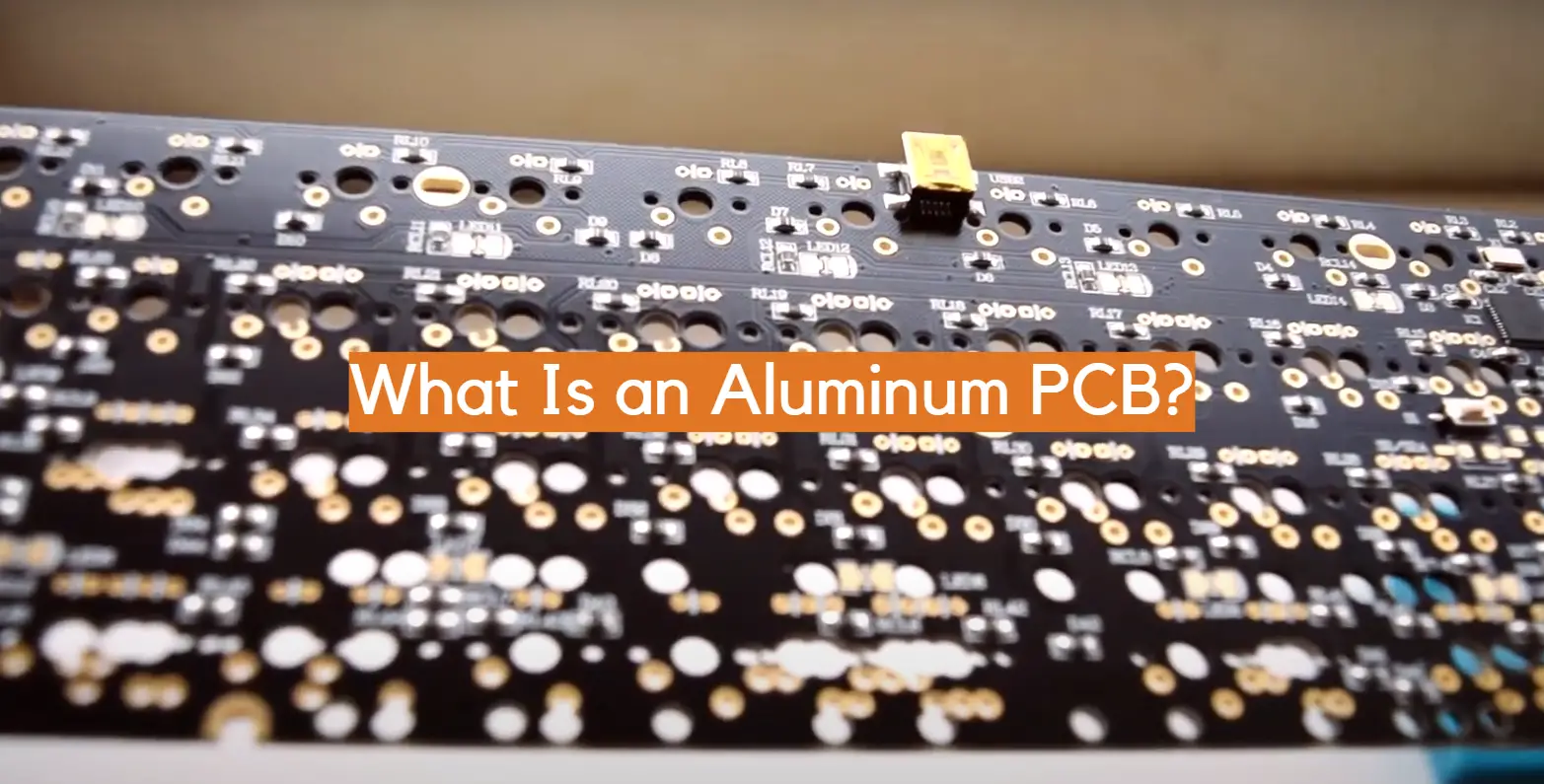







Leave a Reply